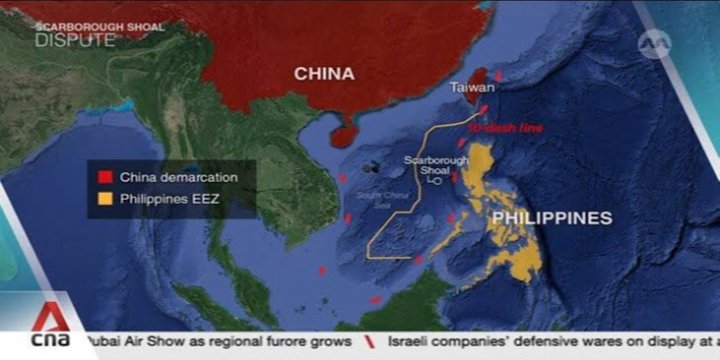SCARBOROUGH SHOAL DISPUTE & CHINA’S NATURE RESERVE PLAN
- China announced the creation of a national nature reserve at Scarborough Shoal.
- The Philippines strongly objected, calling it a violation of its sovereign rights and environmental hypocrisy.
- The move reignites tensions in the South China Sea, a strategic and resource-rich maritime region.
LOCATION & GEOSTRATEGIC SIGNIFICANCE
- Scarborough Shoal (Philippines: Panatag Shoal / Bajo de Masinloc; China: Huangyan Dao)
- ~200 km west of the Philippines’ Luzon Island, lies within its Exclusive Economic Zone (EEZ).
- Located near key global shipping lanes: over $3 trillion worth of annual trade passes through the South China Sea.
- Important for:
- Fishing resources (bountiful stocks),
- Safe harbor during storms, and
- Potential military outpost due to its central location.
WHAT IS CHINA PLANNING?
- Creation of a 3,524-hectare marine nature reserve.
- Claimed purpose: Ecological protection of coral reefs.
- Covers the northeastern side of the atoll — near the only large-vessel entry point.
- Seen by critics as a pretext for stronger Chinese control and potential future militarisation, like in the Spratly Islands.
WHO CLAIMS THE SHOAL?
- Philippines & China both lay claim; sovereignty unresolved.
- De facto controlled by China since 2012 standoff.
- 2016 Permanent Court of Arbitration (PCA) ruling (UNCLOS):
- Invalidated China’s “Nine-Dash Line” claim,
- Recognized Scarborough Shoal as a traditional fishing ground,
- Did NOT decide on sovereignty over the shoal itself.
- China ignored the PCA ruling.
9 DASH LINE

WHY IS THIS A FLASHPOINT?
- The shoal is a symbol of Philippine sovereignty and China’s assertiveness.
- Increasing military and coast guard presence.
- Frequent incidents:
- Water cannons, boat ramming,
- Aggressive manoeuvres, aircraft shadowing,
- Accusations of “maritime militia” activities by China.
RISK & IMPLICATIONS
- High risk of accidental escalation → Armed conflict possible.
- Philippines under President Marcos Jr. is taking a firmer stance but has limited naval capacity.
- S. involvement:
- 1951 Mutual Defence Treaty now clarified to include attacks in South China Sea.
- Any attack on Philippine forces could trigger U.S. military response.
- Potential for international arbitration over environmental degradation.
INTERNATIONAL DIMENSION
- Part of broader China vs. ASEAN maritime disputes.
- S., Japan, Australia, and EU have expressed support for UNCLOS-based order.
- Environmental damage and coercive actions may attract global condemnation.
EXPERT VIEWS
- China’s perspective:
- Claim to “improve governance”, protect the environment.
- Accusations against Filipino fishermen of illegal fishing.
- Philippine perspective (Jay Batongbacal):
- Labelled the move as a coercive tactic to criminalize Filipino fishers and legitimize China’s occupation.
CONCLUSION
China’s nature reserve plan at Scarborough Shoal is not just an environmental move — it represents a strategic maneuver in a contested maritime zone, challenging Philippine sovereignty, international law, and regional stability. This flashpoint continues to test the resolve of ASEAN, U.S. alliances, and the global rules-based order.
Note: Connect with Vajirao & Reddy Institute to keep yourself updated with latest UPSC Current Affairs in English.
Note: We upload Current Affairs Except Sunday.

